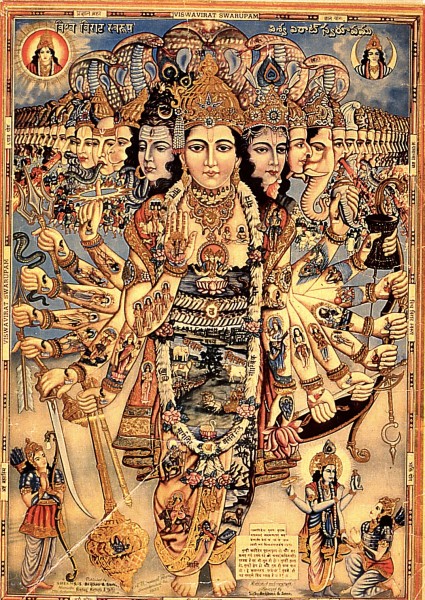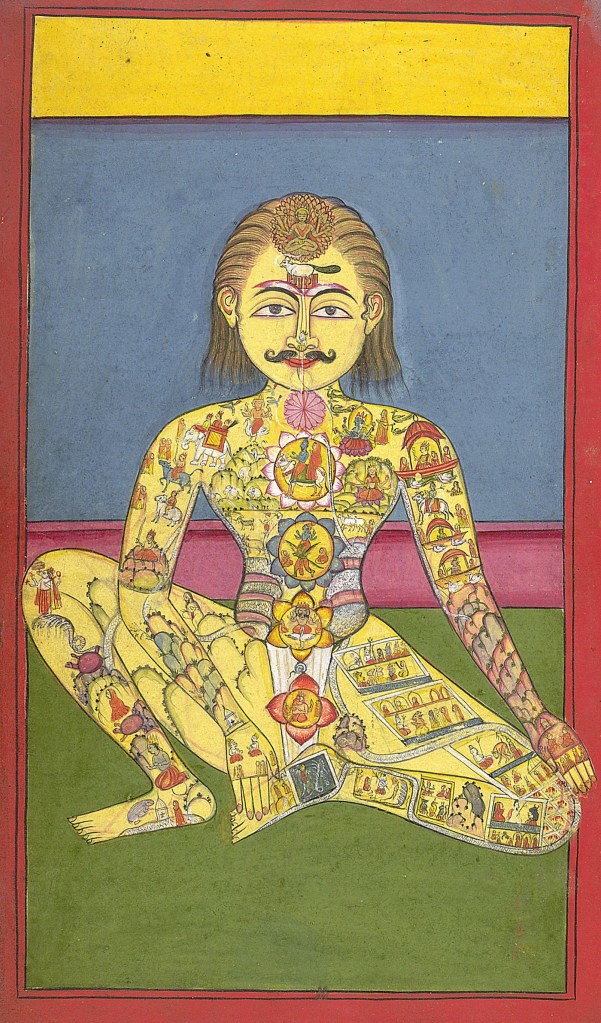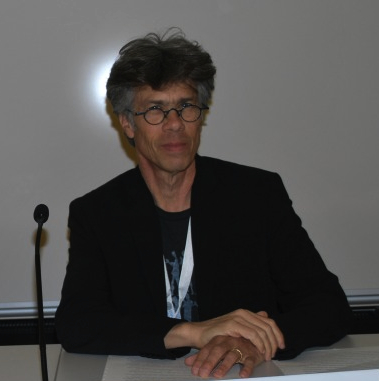I find Jay Johnston’s endeavor to integrate what she acknowledges as Eastern concepts of the “subtle body” into Western conversations on subjectivity, ethics, perception, interpersonal relations, and healing to be both valid and interesting. While her on-line interview left many questions unanswered for me, her contributions to the 2013 volume she co-edited with Geoffrey Samuel, entitled Religion and the Subtle Body in Asia and the West (hereafter RSB) addressed many of those issues. My response, which is based on both my own expertise in Indic religious traditions and my own work on comparison, is to both the interview and the 2013 volume.
To begin, the term “subtle body” is a problematic one. This is noted in the introduction to RSB (2-3), in which it is noted that this term, a translation of the Sanskrit suksma sarira, was first popularized in the West by the Theosophists, and that as such, its Western usage has been, since its inception, freighted with a number of Western scientistic presuppositions. However, the introduction and Johnston’s interview neglect to address the specific use of “subtle body” in the Hindu tradition in which it originated. In fact, the original and perennial meaning of the Sanskrit term suksma sarira is “transmigrational body.” That is, when a person dies, his or her soul inhabits a transmigrational body during the liminal period (which endures for six generations) between death and rebirth in another body. To my knowledge, prior to the nineteenth century, suksma sarira was never applied to the body of a living human being. In India’s yogic and tantric literature, this has simply been called “the body,” although it is the case that an early Hindu tantric description of that body, found in the circa 825 CE Netra Tantra, calls meditation on that body “subtle meditation” (suksma dhyana). This notwithstanding, I and several other scholars of Hindu yoga and Tantra have preferred to use the term “yogic body” to denote what others, including Johnston, have referred to as the “subtle body.”
Another issue that Johnston and her collaborators do not address is also worth noting for its value in comparative, cross-disciplinary conversation. Here I am speaking of the relationship between the flesh-and-blood body (often referred to as the “gross body”) to the subtle/yogic body and the soul. In the mainstream theology of Hindu devotion (bhakti), the relationship of God’s subtle/yogic body to

His (or Her) “gross body” is the opposite of that experienced by humans. That is, while the subtle/yogic bodies of humans are enclosed, for the most part, by their gross bodies, God’s “gross body” is enclosed by His/Her subtle body. This has been described by Dennis Hudson in the following way:
In the case of humans, the mapping places the gross body on the outside with the subtle body and soul enclosed by it and [God] controlling from the center as the Self of all selves . . . In the case of God, however, the organization of the three bodies is reversed . . . A difference between God and humans, then, is this: As a microcosm, the human is a conscious soul looking outward through its encompassing subtle body and, by means of that subtle body, through its encompassing gross human body. [God], by contrast as the macrocosm, is pure being and consciousness looking “inward” to the subtle body that he encloses and by means of that subtle body, “into” the gross body enclosed within his subtle body. God, one might say, gazes inward at his own center.[i]
In a theological tradition in which God is the sole true subject in the universe, such an insight will have implications for any discussion of intersubjectivity, which was one of the areas in which Johnston saw possibilities for an East-West subtle body-based conversation.
One area, not addressed by Johnston in her interview but which is the topic of one of the chapters in RSB (149-67), is the notion of something like the “subtle body” as found in Neoplatonism. While it is possible that Plotinus, the first-century CE founder of Neoplatonism, may have been influenced by Indian “subtle body” concepts carried west along the Silk Road, Neoplatonism’s foundations lie, as its name indicates, in Platonic philosophy. The ancient Greeks conceived of visual perception as occurring when a ray of light, projected by the eye, fell upon an object. This notion of “projective perception” is also found in early Hindu philosophy, which defines perception as the contact between a ray and an object. When perception is projective, the contours of the human subject extend as far as he or she can see. One can do a great deal with such an idea, as the theologian Tertullian did in his account of the immaculate conception, an idea appropriated by many a Renaissance artist:
God made this universe by his word and reason and power . . . This Word, we have learnt, was produced (prolatum) from God and was generated by being produced, and therefore is called the Son of God, and God, from the unity of substance with God. For God too is spirit. When a ray is projected from the sun it is a portion of the whole son; but the sun will be in the ray because it is a ray of the sun; the substance is not separated but extended. So from spirit comes spirit, and God from God, as light is kindled from light . . . This ray of God . . . glided down into a virgin, in her womb was fashioned as flesh, is born as man mixed with God. The flesh was built up by the spirit, was nourished, grew up, spoke, taught, worked, and was Christ.[ii]

This common conceptualization, a fruitful basis for cross-cultural conversation, is also intriguing to any historian of philosophy who would seek to find its source. Was this an idea that traveled down the Silk Road in the Hellenistic period? If so, in which direction did it travel? Or is it an artifact of an Indo-European tradition reaching back several millennia? Or was this simply the case of independent innovation?
In sum, while I agree with Johnston that the “subtle body” of Eastern religions may be used as a heuristic in a broader East-West conversation about philosophy, ethics and so forth, I have certain reservations about how that heuristic may be applied, given the amount of unaddressed Eastern baggage that the term has carried in India. In other words, we have to know what we are agreeing about before we begin building bridges based on that agreement.
[i]Dennis Hudson, “Vasudeva Krsna in Theology and Architecture: A Background to Srivaisnavism.” Journal of Vaisnava Studies 2:1 (Winter 1993), pp. 139-70.
[ii]Tertullian, “Incarnation of the Logos,” (Apologia xxi), translated in Henry Bettenson and Chris Maunder, Documents of the Christian Church, 3rd ed. (London and New York: Oxford University Press, 1999), p. 34.



